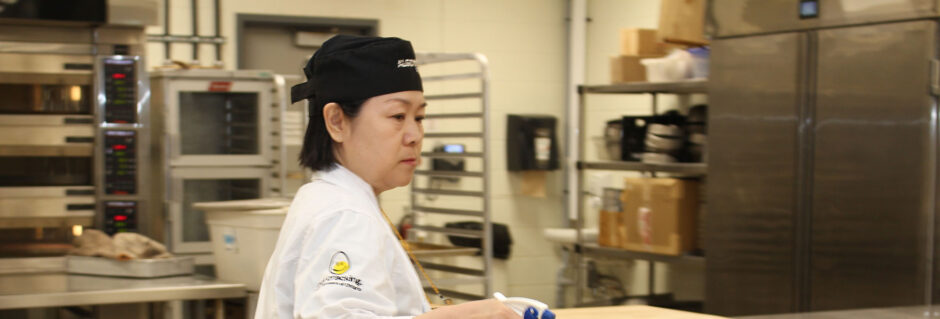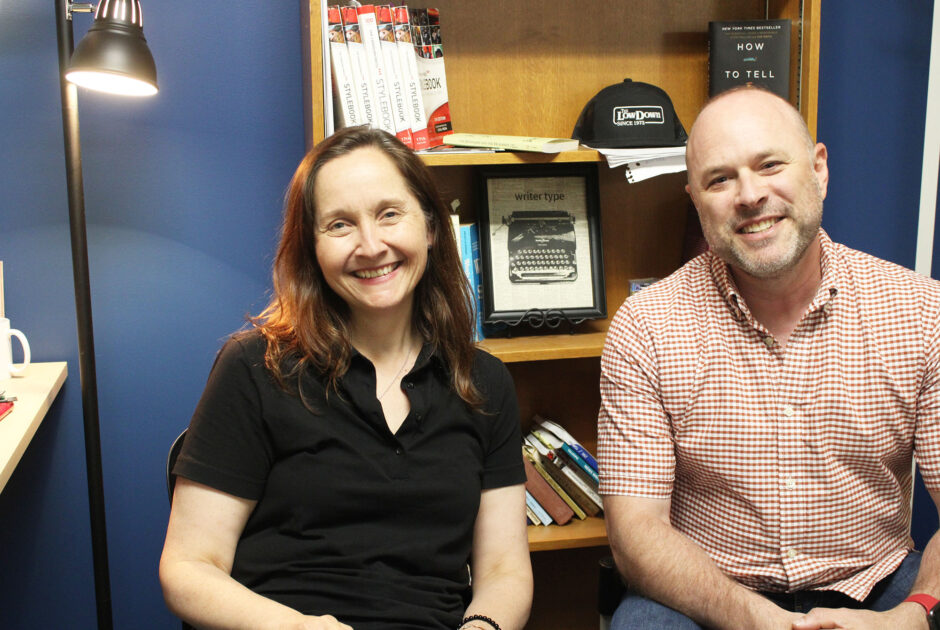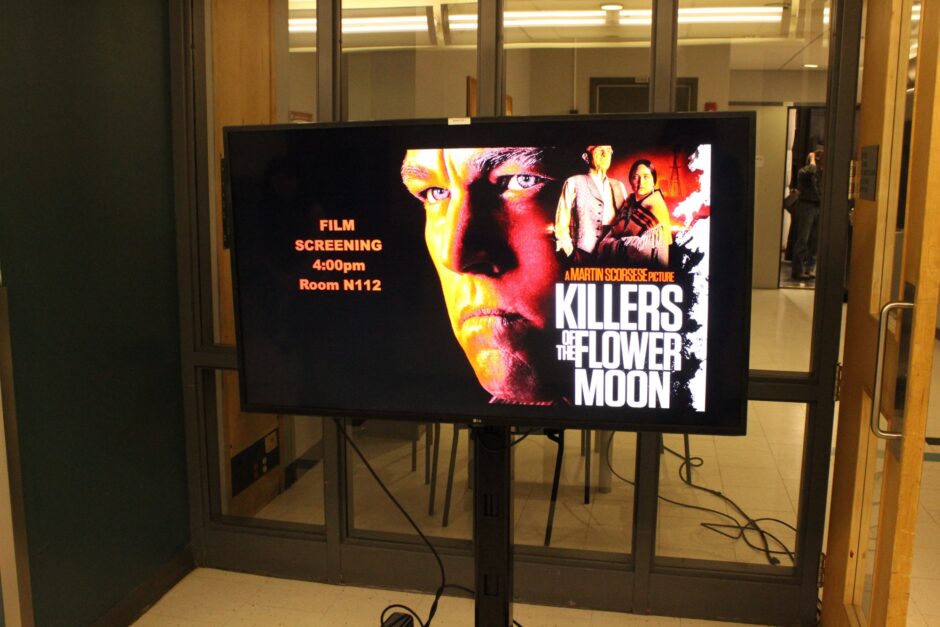AC Rocketry launches toward national competition this summer

In the fall of 2023, a group of Algonquin College students gathered on campus as the day darkened. While most other students made their way home to rest or meet friends in the campus bars, the group mused over the mysteries and wonders of space.
Only five months later, the group had converted their passion into researching and building rockets.
This August, AC Rocketry the college’s first-ever rocketry team, will be the only college club to compete in the Launch Canada 2024 competition in Timmins, Ont. The other teams competing all come from universities across the country.
The group is also hoping to be the first ever college team in Canada to launch a rocket in the tournament.
Ulrich Yann Youdom Kenmoe, a student in the marketing program at Algonquin College, had dreams of becoming an aircraft engineer, but was unable to pursue it due to a lack of guidance. He gets to revisit that dream now, leading the AC Rocketry club’s marketing team and supporting their outreach program. This initiative will encourage local grade 8 students to nurture their own dreams.
“I’m someone who wanted to pursue engineering,” said Kenmoe. “But since I didn’t get the right guidance, I missed track of it. So going into schools, mostly schools that cannot afford to give that chance to kids and building a maker space. I think it’s a really good thing.”
Shane Burke, a student in the mechanical engineering technology program, said he’s had a lifelong passion for solving puzzles.
“When I was younger, I’d always take apart electronics, figure out how they worked and put them back together,” said Burke. “Whether or not they worked again when they got back together was a different issue. It drove my parents crazy.”
However, even with the passion and commitment from its members, the team faces many challenges such as gathering enough funding from sponsors and balancing time-consuming course loads with the club’s weekly meetings.
Brian Gray, the coordinator for the mechanical engineering technology program, said getting past the required safety inspections for the tournament will also be a big hurdle the team will need to overcome.
“Just getting there with a rocket that works, that gets past inspection and all the requirements will be quite hard,” said Gray. “There is a safety element to it and telemetry requirements of giving the rocket’s location back. Getting to a certain altitude and releasing the shoot at the right time. The electronics also have to survive the force of the rocket takeoff.”
However, Gray said he believes if the team can coordinate their efforts effectively and manage all the challenges in their way, they have a chance to be the first college rocketry team to launch a rocket in the Launch Canada 2024 tournament.
Over the last two terms, the club amassed 20 like-minded people from multiple programs, with most of them coming from the mechanical engineering technology program. They then divided themselves into teams, each contributing in their own way to the club’s ultimate goal.
Matthew Zlomislic, a mechanical engineering technology student and lead of the club’s business team, attended many science camps as a child. His lifelong goal is to contribute to the production of suits that will make it possible to gather resources and build structures in space.
“The amount of resources space has, and the potential that it holds if humans expand to exploring space,” said Zlomislic. “So, my dream, my goal in life, is to make mech suits. They’re giant robotic suits that people can pilot to help build in space.”
Zlomislic said the nine-foot-tall rocket the club aims to have built by August will reach an incredibly high speed and height.
“It’s going to go two times the speed of sound. That’s pretty fast. 22,000 feet is what we’re aiming for. That’s very high,” he said.
The club’s 20 active members are divided between two major teams. The engineering team consists of aerostructure, avionics, recovery, propulsion, safety, payload and logistics. The business team consists of art, marketing, website building and outreach.
AC Rocketry has received $4,500 from sponsors and has already spent over $2,000 towards their rocket, their sponsors are: Canadian Defence Review magazine, Space Simulation Services of Canada, Altium, Ansys and NordSpace.
Ansys will provide the club with a software they can use to simulate the conditions at very high speeds, while Altium will contribute with assistance in designing the circuitry and electronic parts for the rocket.
Jesse Piggott, a student in the accounting program at Algonquin College, said he met the club members Zlomislic and Kenmoe at the Wolves Den Restaurant on campus and decided to join the club to help track their finances.
“Matt just starts talking about the club and how they need somebody to do their books for them. And funny enough, I’m in accounting. So, I decided to join in,” said Piggott.
Paying for rocket parts and tournament fees is not all the club plans on doing with the upwards of $12,000 they hope to receive from sponsors. They also aim to fund an outreach plan to donate 3D printers to local public elementary schools and create spaces where young students can learn and potentially be inspired to build their very own rockets.
The club members expect to spend around $3,000 off their own, collectively, to complete the funding of their outreach program.
Kishanth Jeyamoorthy, a student in the mechanical engineering technology program, leads the outreach team of AC Rocketry. He’s had experience with outreach programs in a robotics team in high school and said he is utilizing those skills and contacts to help the club.
“We have one project in motion and one project in the works,” said Jeyamoorthy. “We’ve donated a 3D printer to a local public elementary school, York Street Public School. They were recently building a maker space and didn’t have access to a 3D printer.”
Jeyamoorthy said the 3D printer was from the Algonquin Matrix Base, who was retiring one of their old 3D printers that was no longer useful due to compatibility issues with their newer models. AC Rocketry received the 3D printer and donated it to York Street Public School earlier this year.
Additionally, the club is planning to demonstrate rocket-building and the 3D printers to students.
“We are planning a demonstration with that school, both for a 3D printer and hopefully a bottled water rocket, which is currently in the works,” said Jeyamoorthy. “We’re hoping that this will be a demonstration piece we will use at other local schools and maybe even the summer camp at Algonquin.”
A bottled water rocket works when a water bottle is placed on top of a PVC pipe attached to an air pump with water and a valve keeping the valve in the pump. Once enough air is pumped in, a person will release the bottle and the pressure forces the water and excess air out of the bottle launching it up.
Zlomislic, the business team’s lead, said the club is competing in the basic category of the tournament, which means they are only allowed to use off-the-shelf parts for most of their rocket. With the exception of some hardware parts the team 3D printed themselves, such as the “fins” of the rocket, used to provide stability during flight.
“We can’t really design too much about it ourselves,” said Zlomislic. “Unless it’s anything to do with the outside, like the fins. We’ve designed that. We’ve done a bunch of calculations to find the exact right angle. That way it’s strong enough to last all the vibrations and the speed that it’s going at.”
Currently, the club members are hard at work developing their recovery system, which will make it possible to recover and reuse parts of their rocket on their next project.
Owen Halldurocher, a student in the mechanical engineering technology program, is one of the members working on the details of that system.
“When the rocket reaches its highest height in its trajectory, the pressure on the rocket is going to get released into the parachute bay. The rocket separates into three pieces,” said Halldurocher. “And that will drag out two parachutes. So, one parachute will go first, slow it down a little bit, and then a bigger parachute will go off.”
Halldurocher said he joined the club after getting “hooked” on the puzzles involved in calculating the most technical parts of the system, such as finding a risk-free way to deploy the recovery parachutes.
“When we were first talking about it, the simplest thing to do would be to use some black powder as a primary explosive. To create the gas that expands the rocket parts apart and launches the parachutes,” said Halldurocher. “Using a black powder involves more licensing, there’s more risk involved. We can’t test on campus safely. So, we’re trying to figure out a system that either uses less powder or not at all.”
The club’s artistic team, led by Jorge Alcala, is tasked with designing their logos, merchandise, website and posters.
Alcala has already earned a degree in graphic design from a university in Mexico, and is now enrolled in the drawing foundations program at Algonquin College. He can be seen on campus sporting a traditional Scottish bonnet called Tam o’ Shanter.
“What I like the most are the friends that I made here,” said Alcala. “Because, at least in my course, there’s not many ways to meet other people. Back in Mexico, we had classes with different people from different courses. Here, we don’t.”
All AC Rocketry members agreed that, in the future, they would like to build rockets that are even more complex and compete in tournaments that will allow them to build every piece of the rocket themselves.
For that, however, they will need even more members dedicated to reaching new heights along with them.
Zlomislic said all members would be thrilled to have new members join.
“Oh, we’d love it if people wanted to join,” he said. “We need so many people.”









